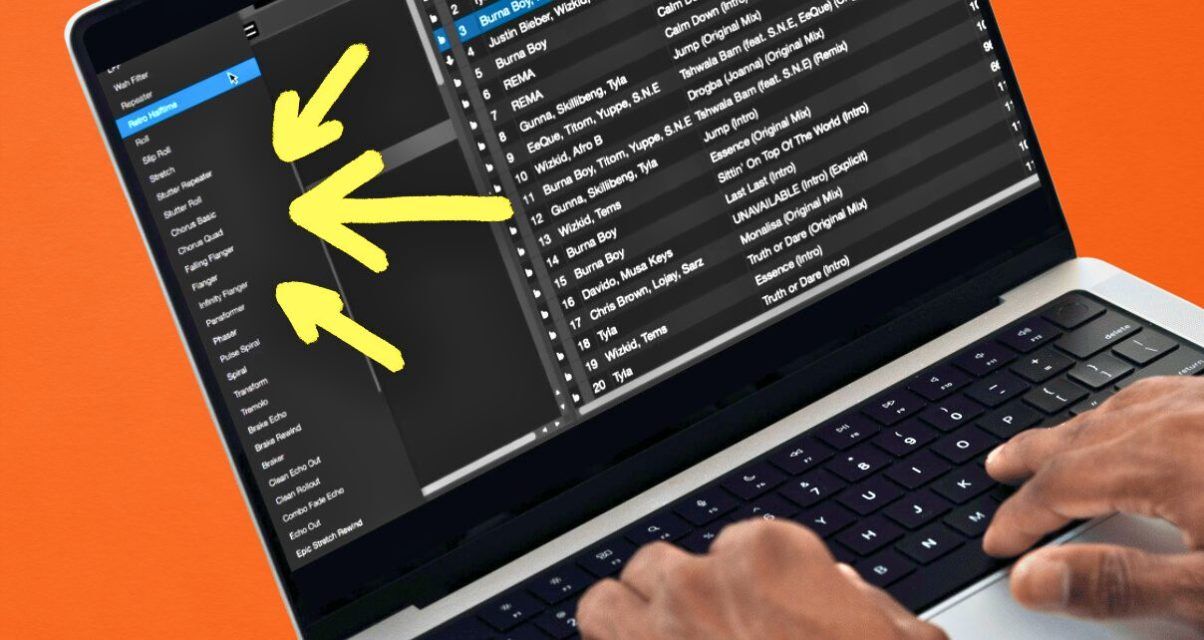So Serato has just dropped the 3.2 beta version of its software and it’s all about effects. Or is it? Let’s take a deeper look into this, and try and see how it fits in with the bigger picture of where DJ software is at right now.
Remember it’s a beta…
The beta version (as ever) is something that you have to opt into, and you have to be aware that you’re not getting production software, you’re not getting something you should DJ on out in public, there are certain features that won’t work, and so on.
For most DJs, it’s best to just wait for the general release. We will tell you what you need to know about this version for now in this article, but if you still want the beta, get it here.
What are the big changes?
It’s all about effects, effects, effects… but also Apple Silicon support, which actually is a big thing (albeit 3.5 years after Apple Silicon arrived). But the effects are the thing that they are pushing.
In short, they’ve revamped them. You can create and save presets of your favourite effects. There are new FX view panels,. And they’ve brought back the rollout effect which some of you will remember from Serato Scratch Live many years ago.
But for me, the biggest thing here is the fact that they’ve added channel effects. These are the effects that are on the big knobs underneath your EQs. On some cheaper controllers they’re just filters, and now inside Serato you can switch these for other effects as well. It’s nice to see those, and I think many will find them genuinely useful.
Do we really need more effects?
The problem though (I think for many, if not most DJs), is that we use filter, echo, reverb – and that’s about it. Here at Digital DJ Tips, we work with some of the biggest DJs in this business, and honestly, most of them don’t go past that. So I wonder how much people really want this.
Learn to use Serato like a pro: Serato Made Easy
Even nowadays, among those DJs who do use a lot of effects, the hardware effects on a lot of gear are really good, and a lot of DJs prefer those over software effects. So that means they will never use any of these Serato effects anyway.
So yes, it’s nice, and they’ve done a good job of it, as they usually do with these things. But I’m just not so sure they’re answering a question many people are asking. Frankly, there are bigger things I’d like to see fixed in Serato.
Improvements we’d like to see
For me, it’s mainly library stuff. I want to see better search, I want to see mixed playlists where you can have stuff from your streaming services and from your local library in one playlist. I want to see the ability to use more than one streaming service (in Serato at the moment you just pick a single service). I want to see track preview. I want to see a cloud solution so that you can use Serato on more than one computer and have it handle the library elegantly.
But also, there’s a big new thing I want to see in Serato, and it’s what we call “beatgridding 3.0” – or “the death of beatgrids“. This is dynamic beatgridding, where the software uses AI to look at the tune, does a few calculations, and then puts a perfect beatgrid on it, every single time.
Algoriddim’s djay Pro has cracked it, and I believe VirtualDJ has (although I’ve not had a play yet). I’d really like to see this in Serato because it’s going to make life so much easier if you just trust that when you hit the sync button, it’s simply going to be right – you literally will stop ever worrying about it (which is why we call it the “death of beatgridding”).
Watch the video
In this short video, we take a look at everything the Serato beta brings, what we’d like to see added, and the bigger problem with DJ software innovation.
So, why does DJ software seem to move so slowly?
I want to end by sharing something I’ve been feeling for a while now, which is a possible explanation for why (some) DJ software seems to move slowly.
DJ software is not like video, production or photography software, where there’s so much money in there, so it can move quickly and become best of class without a big delay. The DJ world is relatively small, and I think that’s part of the reason even some of the big names in it don’t really keep up with what’s possible.
Read this next: Best DJ Software – Serato, Traktor, Rekordbox, VirtualDJ, Djay Pro, Engine DJ?
Maybe there are too many software companies – we’ve got more software companies it seems than major hardware companies right now (which is probably one of the reasons why the owners of Rekordbox are trying to buy Serato).
I increasingly feel that DJ software is in a weird place at the moment. Embedded systems are getting better, and as I mentioned earlier, a lot of people don’t even use the features in software if there is a feature in the hardware that does the same thing (in this case, effects).
Finally…
So, good work Serato. The effects look and (I’m going to guess) sound great, and I do like those channel effects – but I’m increasingly interested to see how the DJ software world shakes out over the coming years, because I suspect we are entering some disruptive times…


